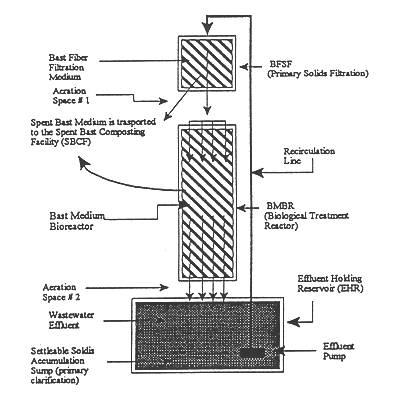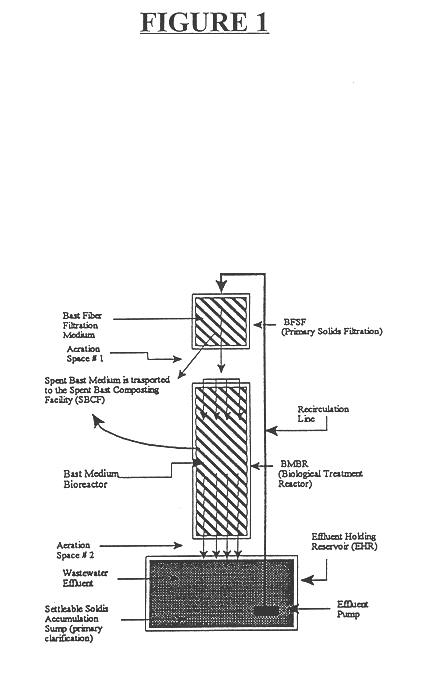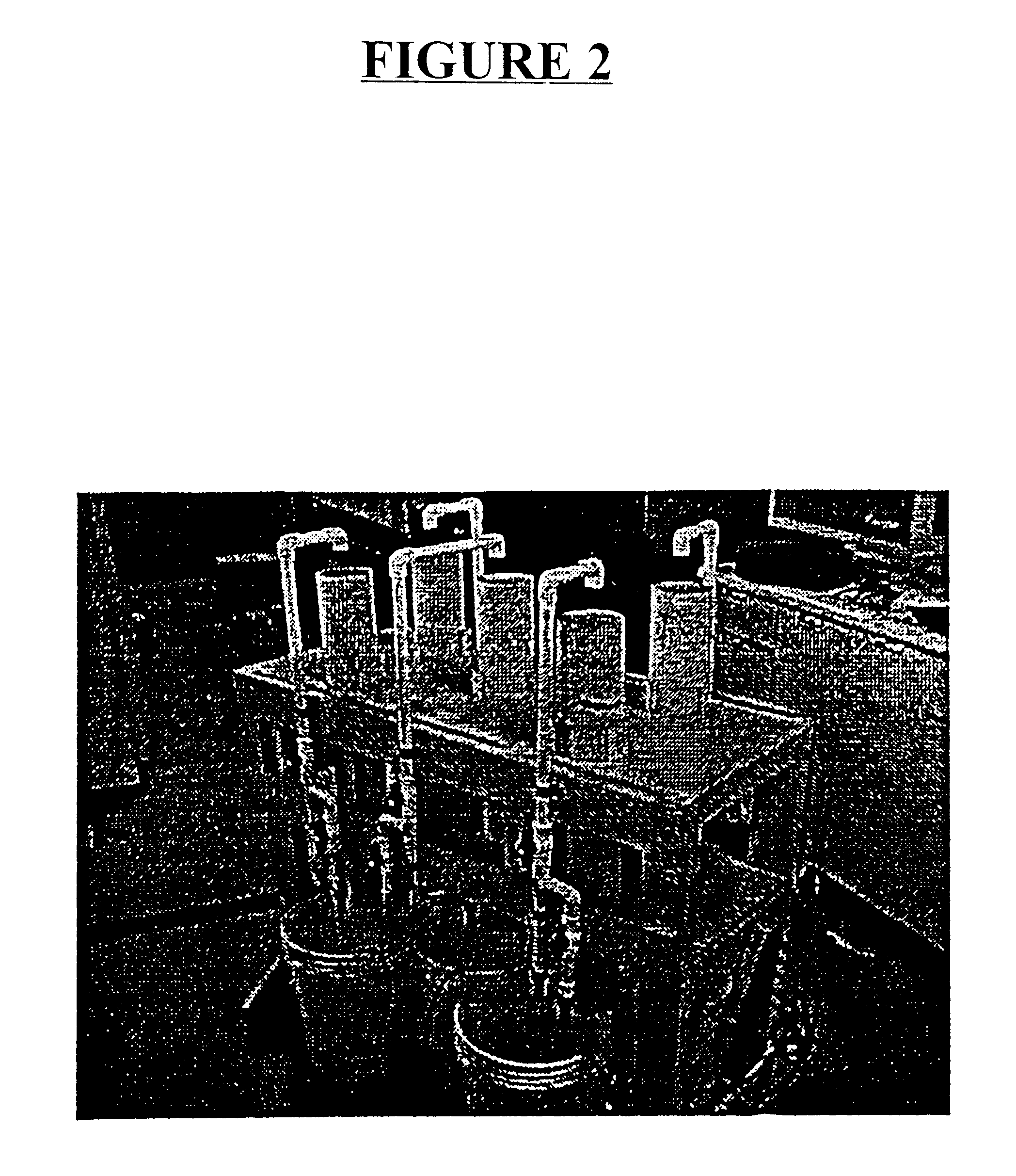Bast medium biological reactor treatment system for remediation and odor suppression of organic waste streams
a biological reactor and treatment system technology, applied in biological water/sewage treatment, filtration separation, separation processes, etc., can solve the problems of unfavorable emotional response, nuisance odor, and limitation of swine production facilities odor,
- Summary
- Abstract
- Description
- Claims
- Application Information
AI Technical Summary
Benefits of technology
Problems solved by technology
Method used
Image
Examples
example 1
Wastewater Solution for Lab-Scale BMBRTS
A swine waste solution including both feces and urine was prepared for each batch test of the BMBRTS. The swine waste was collected from the Mississippi Agricultural and Forestry Experiment Station (MAFES) Swine Unit located in Starkville, Miss.
Modeling the system for large scale swine production facilities, the mass of swine manure and urine excreted by a 90 kg finishing pig is approximately 5.9 kg per day (MWPS-18, Livestock Waste Facilities Handbook, Iowa State University, 1985). Hereafter, the term "manure" will represent the total mass of feces and urine from the animal per unit of time. A typical finishing facility has about 880 head. Therefore, the daily manure production from a typical finishing house is 5,192 kg per day (880.times.5.9 kg / day=5,192 kg / day). Finishing barns, in this region of Mississippi, typically utilize a pit-recharge type of waste storage / removal. A typical facility has about 340,687 L of wastewater beneath the slat...
example 2
Wastewater Parameters
Water from the BMBRTS was analyzed for total solids (TS), volatile solids (VS), ammonium (NH.sub.4), and chemical oxygen demand (COD). Total solids, volatile solids, and ammonia parameters were analyzed according to Standard Methods, 17th Ed. The COD was determined using the modified Hach Company's modified closed reflux, calorimetric procedure. The following list gives the specific procedure used for each wastewater parameter tested.
All samples were processed within the time limits associated with that particular analyate.
Odor Assessment Procedure
To begin the experiment, a sample of raw swine was obtained from a Mississippi State University swine facility. The waste sample contained both solid (feces) and liquid (urine) constituents. This raw waste sample was then mixed with a small amount of tap water in order to dissolve the feces and give a "worst-case" approximation of an in-barn waste pit. The wastewater sample, hereafter e...
example 3
Laboratory Scale Comparison of Kenaf versus Conventional / Non-Conventional Attached Growth Media
This experiment was conducted at the Agriculture and Biological Engineering Wastewater Research Facilities at Mississippi State University during the month of September, 1999. The purpose of this experiment was to evaluate the odor reduction and water treatment capacity of kenaf compared to other attached growth media (rocks, biorings, and pine chips) and standard treatment schemes (anaerobic pit) for use in the treatment of swine wastewater. The different media selected for use can be classified into three major categories: 1) Conventional, 2) Non-conventional, and 3) Standard treatment schemes. Further, these categories can be broken into two sub-classes: 1) Abiotic and 2) Biological. Conventional media would be those media that have been well studied and used in wastewater treatment. Non-conventional media would be those media that have not been well studied or are not currently in wide...
PUM
| Property | Measurement | Unit |
|---|---|---|
| Mass | aaaaa | aaaaa |
| Mass | aaaaa | aaaaa |
| Mass | aaaaa | aaaaa |
Abstract
Description
Claims
Application Information
 Login to View More
Login to View More - R&D
- Intellectual Property
- Life Sciences
- Materials
- Tech Scout
- Unparalleled Data Quality
- Higher Quality Content
- 60% Fewer Hallucinations
Browse by: Latest US Patents, China's latest patents, Technical Efficacy Thesaurus, Application Domain, Technology Topic, Popular Technical Reports.
© 2025 PatSnap. All rights reserved.Legal|Privacy policy|Modern Slavery Act Transparency Statement|Sitemap|About US| Contact US: help@patsnap.com



